A Visit to Tryon Palace
Our stay in New Bern, North Carolina continues with a trip back in time – to one of our country’s first colonial capitals and the home of William Tryon – a royal governor of New Bern. President George Washington visited this lavish palace for dinner and a ball in 1791.
Click on the first photo in each group and scroll to see the square photos at full size.
To start at the beginning of this series, visit Seeking the Sun 2023.
First View of the Palace
We checked in at the North Carolina History Center, which was a short walk to the entrance of the Palace through a residential neighborhood. As we turned to enter the grounds, we had the full-front view of the house above – the Kitchen Office (left) and the Stable Office (right). We walked from the street, between the white houses in the second photo below and through the gate, as visitors would have entered in carriages in 1770. I must say it was pretty impressive.
Through the Years
Of course those two white houses (as well as several other Historic Homes in the area) were not yet built in 1770. After the Palace burned in 1798, the state divided the surrounding land into building lots and they were sold.
The Daves House (left) was built in 1913 and moved to this location during the reconstruction of the Palace. It became the first visitor center and now serves as a preparation area for brides during weddings held at the Palace. The Dixon House (right) was built in the early 1830s and remains in its original spot. Tours are offered with information about George W. Dixon – a local tailor, merchant, and politician.
Let the Tour Begin
We were able to explore the courtyard and get a feel for the size of this place. The round guard posts on either side of the gate were very cool, and offered the palace guards a proper place to keep an eye on things. It wasn’t long before our guide greeted us on the steps and called us forward.
“North Carolina’s Tryon Palace was once known as the finest government house in colonial America. Completed in 1770, only years before the Revolutionary War, the palace was built for British royal governor William Tryon. The price of building the palace met with controversy and added to conflict in the Colonies. During the war, it became the first Capitol of North Carolina and home to the first governor of the new state. The palace’s eventful and storied past has seen it lavishly decorated, stripped for materials, looted, abandoned, burned, covered over, and eventually rebuilt.” ~ READ MORE
First Things First
A family crest was posted outside, with another over the front door – just in case we forget whose house this is! Since most of the furnishings burned in the fire, reproduction pieces have been gathered over the years to reflect the time period. It was a very interesting tour – made more so by our very animated and charming tour guide.
The first room we visited was used by the North Carolina Legislature for governmental business. The governor’s seat was at the center table with portraits of the King and Queen of England over each shoulder to show his power. This room was just beautiful and in looking at the website, the whole Palace is decorated to the nines during the holidays.
The Tour Continues
Our next room was set up for a cup of tea, or a card game before or after dinner. Thanks to an extensive list of the house’s contents for insurance purposes, during the restoration most of an extensive collection of Governor Tryon’s books were replaced with the exact same books – some, right down to the print edition. Skylights were a new idea at the time, and very helpful in dark stairways. Shall we go upstairs?
Upstairs Sleeping Quarters
Some (very restrictive) clothes were laid out for the lady of the house – and the man!
Kitchen Office
The basement offered living areas for the house servants and several locked storage areas. Only the head butler would have access to those areas since they contained liquor, sugar and other supplies that were in short supply during that time. We emerged and headed off to the Kitchen Office. The kitchen servants lived on the second floor.
A lovely woman gave us a demonstration on some of the new inventions of the time and explained how they managed to cook meals for such important people without the modern conveniences that we all enjoy today.
Kitchen Garden
In this area, it was very evident that the Palace today has neighbors – who wouldn’t have been here in William Tryon’s time at the Palace. Although our visit in late January didn’t have much in the way of bounty from the gardens, the red brick buildings were just beautiful. Stakes in the ground indicate which vegetables and herbs are grown when it’s a little warmer.
Formal Garden
Again, our late January visit didn’t offer much in the way of flowers, but the greenery was beautiful and the arches and entryways were lovely. The sun was in a terrible position for photos of the open area behind the gardens, so I scanned a more aerial photo from the brochure for an idea of the lovely view of the Trent River that the Tryons had from their property.
Stable Office
The Stable Office is gorgeous and is the only original part of the Palace complex. Both wings survived the 1798 fire that destroyed the main building of the Palace, but the Kitchen Office was demolished in the early 19th century. The stables servants lived upstairs, but we couldn’t go up there.
Governor Tryon and his wife, Margaret, were both avid riders and rode nearly every day. This was an important skill in the 18th century, when the roads were in very poor condition and not well-suited for carriages. One of Tryon’s major accomplishments during his tenure was to improve the road system.
Back at the North Carolina History Center
Another day would have been required to do the North Carolina History Center justice. There was so much information that we rushed through after such a great tour of the Palace. Maybe on another trip to New Bern, we would spend more time here, because it was so well done and very informative. I went out behind the Center for some photos of the Trent River, and the beautiful day we enjoyed in New Bern.
Wow, What a Day!
Next up: 300 Years of History
Happy trails,
Barb





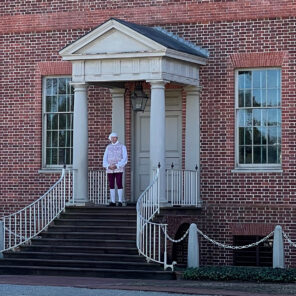

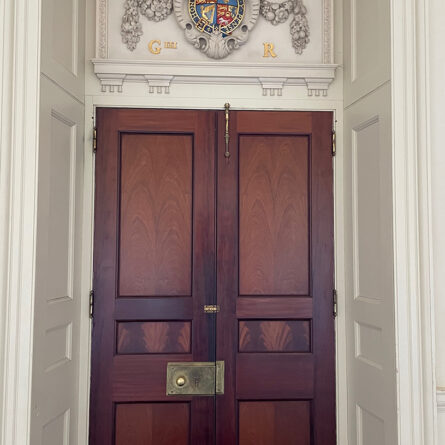


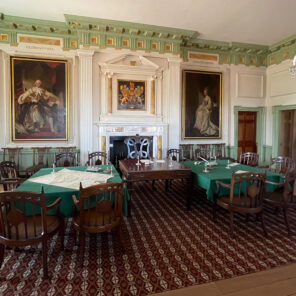


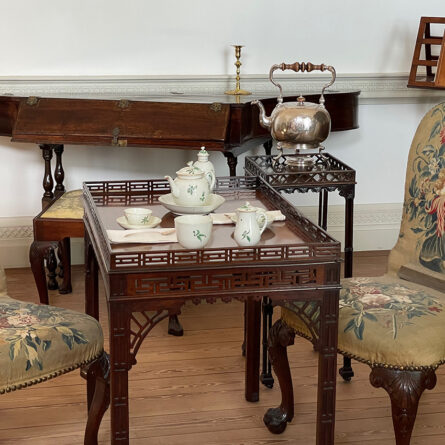
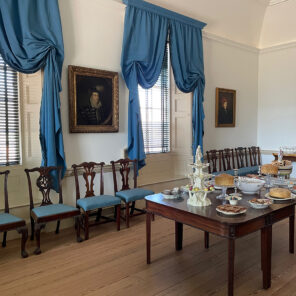
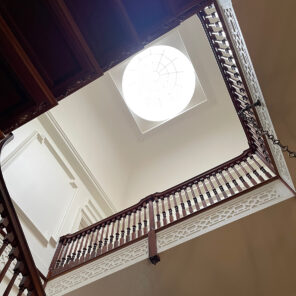
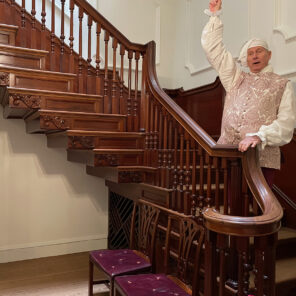
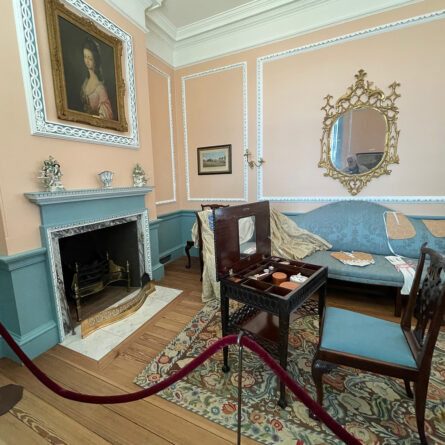


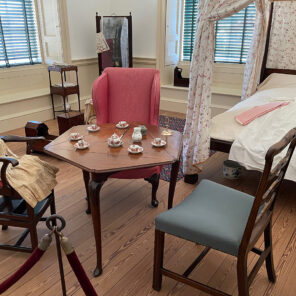

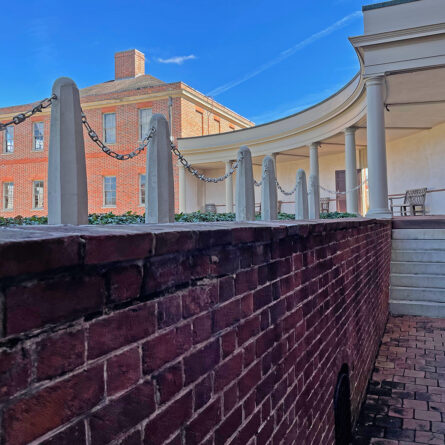
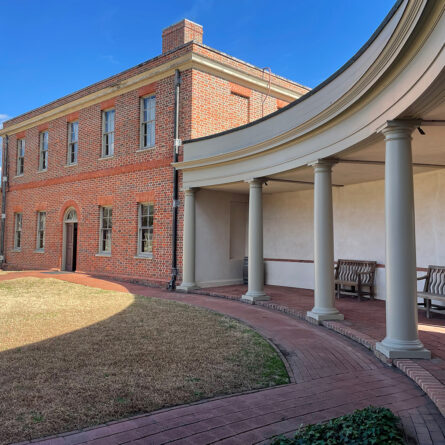
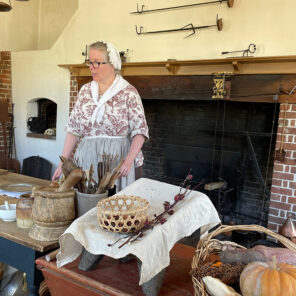
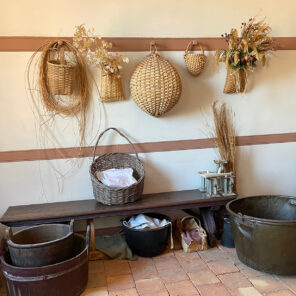


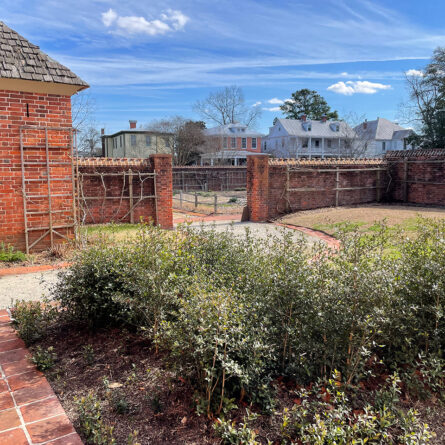
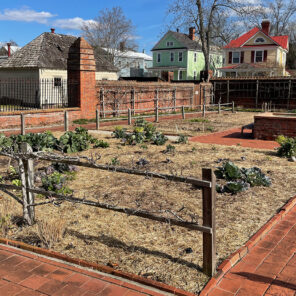
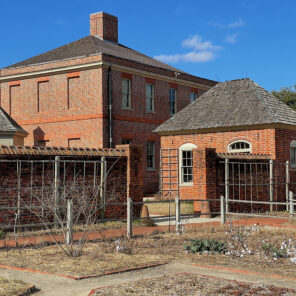


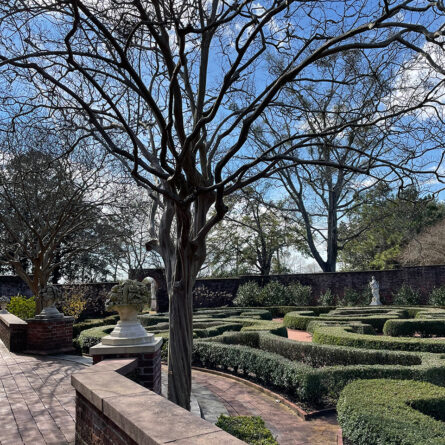
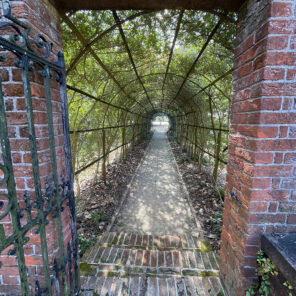


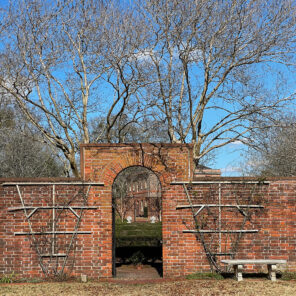


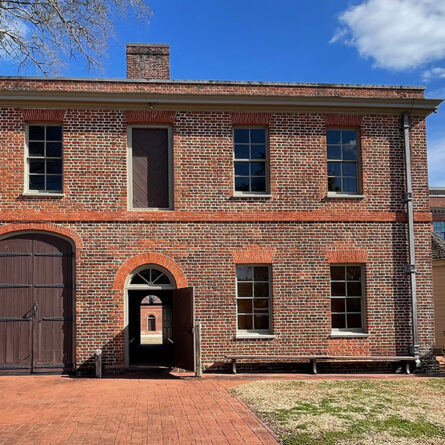

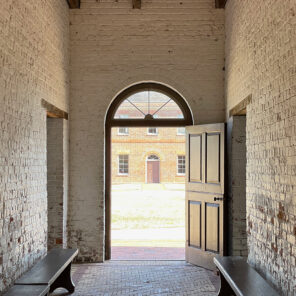
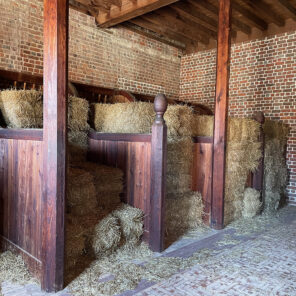
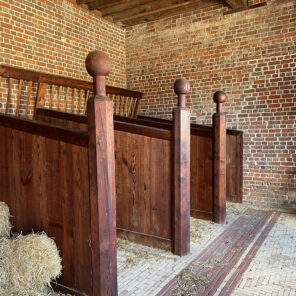

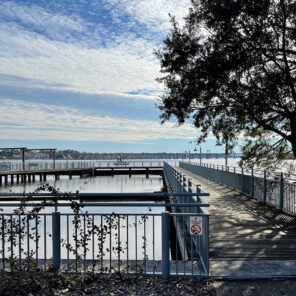







Comments are closed here.